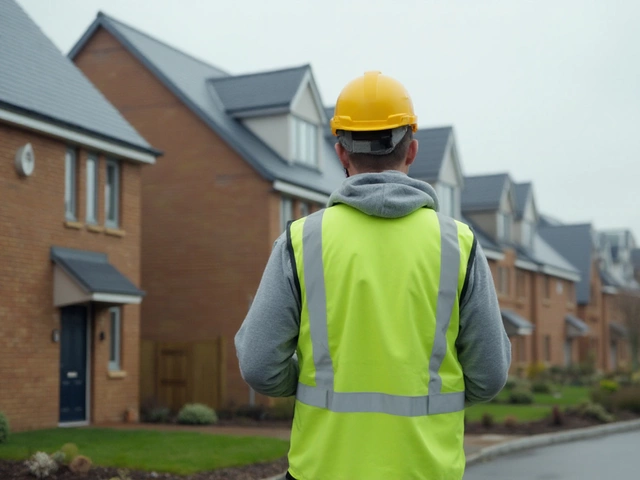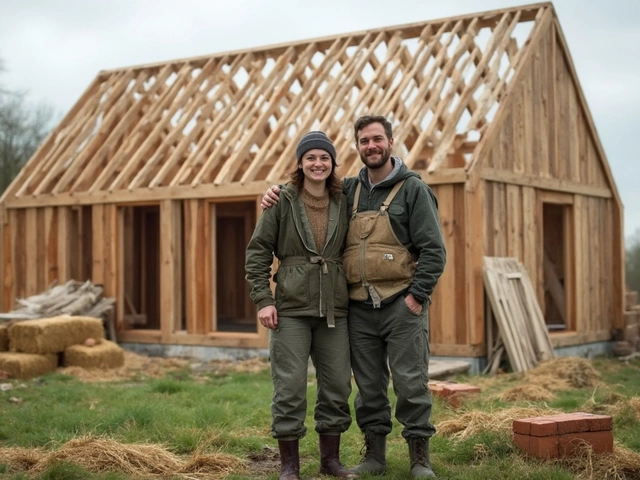Common Issues in New Builds: Understanding Construction Defects
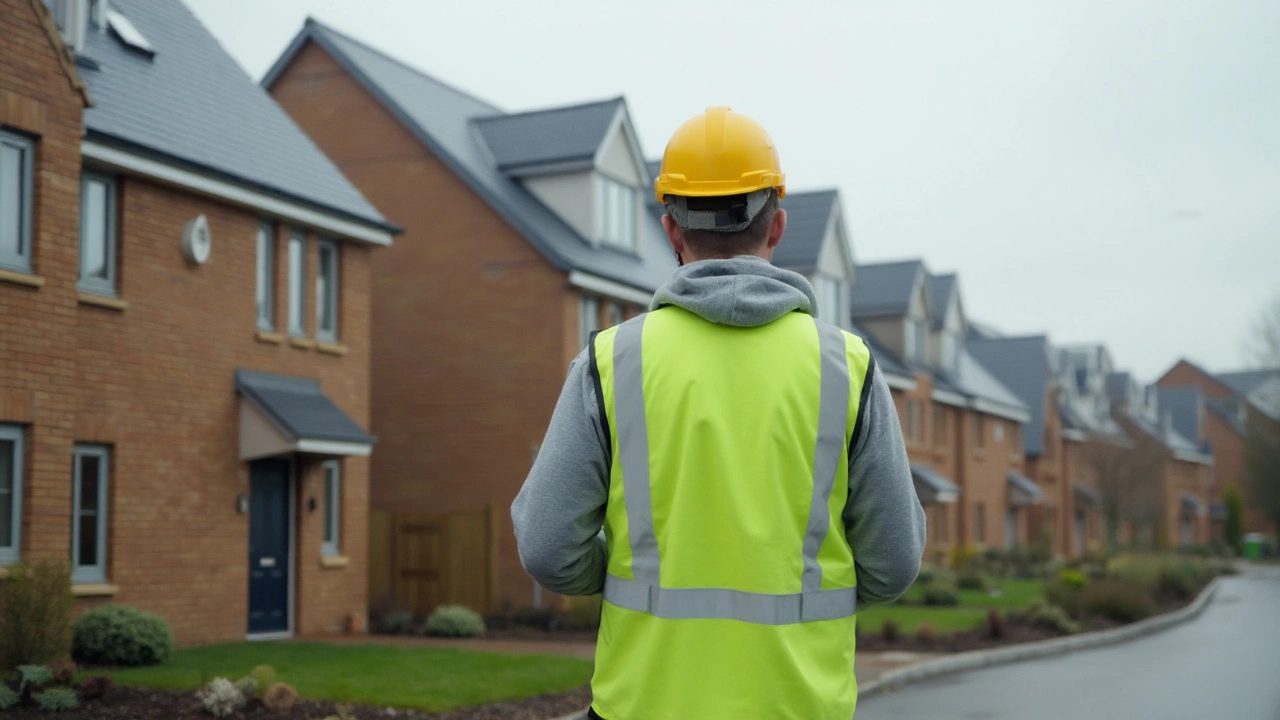
When stepping into a brand-new home, the fresh paint and immaculate surfaces often paint a picture of perfection. But beneath the surface, construction defects may lurk, waiting to challenge that notion. These aren't merely blemishes or imperfections; defects can spell enduring challenges or even hidden dangers.
Understanding what constitutes a defect in new builds is crucial for prospective homeowners. With issues varying from minor cosmetic touch-ups to major structural concerns, new builds need a keen eye and knowledgeable approach. It's about more than just spotting flaws; it's about ensuring the safety, usability, and longevity of a newly constructed home.
- Defining Construction Defects
- Common Types of Defects
- Identifying and Addressing Defects
- The Role of Inspections
- Preventative Measures
- Legal Considerations and Warranties
Defining Construction Defects
A construction defect in new builds refers to any issue that compromises the intended function or integrity of a structure. Not all defects are immediately apparent, and they might manifest themselves after the homebuyer has already moved in. These imperfections can arise either from poor design, substandard materials, or mistakes during construction. Often, what defines a defect can also depend on local building codes and the specifications outlined in construction contracts. Understanding these nuances helps in determining both responsibility and the steps needed to correct them.
The varied nature of construction defects can be broadly categorized. Some defects are patent, visible and easy to detect, like misaligned doors or uneven flooring. Others are latent, meaning they remain hidden until further investigation uncovers them—these might include issues like faulty plumbing hidden behind drywall. A study conducted by the National Association of Home Builders mentioned that nearly 34% of homeowners report some form of aesthetic defect within the first year of moving in. Yet, while cosmetic flaws can be quickly addressed, structural integrity problems in new builds can lead to more significant concerns, impacting safety and potentially leading to costly repairs.
Causes of defects vary widely, and pinpointing them involves examining several aspects of the building process. Technological advancements in construction aim to mitigate these issues, but defects persist due to human error, unpredictable environmental conditions, and the inherent variability in material properties. A noteworthy way to understand the nature of these defects is through building inspections and quality assurance assessments. Often, authorized inspectors will utilize industry-standard protocols to evaluate new builds, identifying issues that might not be instantly evident but have the potential to grow into more severe problems if left unaddressed. Charting these often-intricate construction conditions can form the basis for builders and homeowners in tackling these challenges head-on.
There's also a legal dimension when defining construction defects. Various jurisdictions have their interpretations and stipulations of what legally constitutes a defect. Homebuilders are typically bound by implied warranties, ensuring their work meets basic performance criteria. However, when disputes arise, it's crucial to have comprehensive documentation of the defect from the onset. As a respected legal analyst once noted, "A well-documented construction defect can bridge the gap between frustration and fair resolution," emphasizing the resolution's foundation in proper evidence collection.
"In construction, the devil is often in the details. A single oversight can result in a cascade of complications," suggests renowned home inspector, John McElroy. "It's important for homeowners and builders alike to pay heed to the smallest indicators, which could prevent a minor glitch from becoming a significant repair headache."
Common Types of Defects
New constructions, while a marvel of modern architecture and engineering, are not devoid of errors. A myriad of construction defects could surprising many a new homeowner. These issues can range from the seemingly trivial to the profoundly serious, each carrying its own set of impacts and costs. Understanding the common types of these defects can prove invaluable to ensuring the quality and longevity of a property.
One prevalent category is cosmetic issues, which, while superficial, speak volumes about the attention to detail in a build. Think of uneven paintwork, misaligned tiles, or finishes that aren’t smooth. Though they might not affect the function, they often signify rushed or careless work processes. Prospective homeowners might feel an emotional, immediate pull to disregard physical appearances, yet such defects might foreshadow deeper issues.
Moreover, lurking behind walls and structures could be structural defects that pose alarming risks. Unstable foundations, improper load bearing, or poorly constructed roofs could affect not just aesthetics, but safety and durability of the home. Such problems, if not rectified early, can result in costly repairs and potentially hazardous living conditions. A sobering fact is that the National Association of Home Builders estimates nearly 10% of first-year claims on new homes relate to structural components lacking expected integrity.
Mechanical, Electrical, and Plumbing (MEP) Issues
The mechanical systems within a new build also present their own share of potential defects. Mechanical, electrical, and plumbing (MEP) issues often come to light post-occupancy and can lead to significant inconveniences. These systems encompass everything from heating and cooling mechanisms to wiring and pipework, integral to the home’s day-to-day operations. Early identification of issues — like insufficient HVAC capacity, faulty wiring, or leaks — is crucial to avoid more severe complications. The inconvenience of flickering lights or an unevenly cooled home is nothing compared to the dangers of a short circuit or a burst pipe.
Adhering to proper building codes and standards is pivotal, yet surprising is the number of homes that fall short. A significant finding from the Joint Center for Housing Studies of Harvard University highlights that around 20% of new homes show signs of neglect when it comes to adhering strictly to codes. This not only endangers property value but also the safety of residents, underscoring an urgent need for thorough inspections and diligent construction oversight.
The importance of diligent inspection is perhaps best captured by architect Frank Lloyd Wright, who once noted, "You may use stone, wood, and concrete, but it is the love that builds a house." A lack of love for the detail often signifies the presence of lurking imperfections that mere materials can't compensate for.
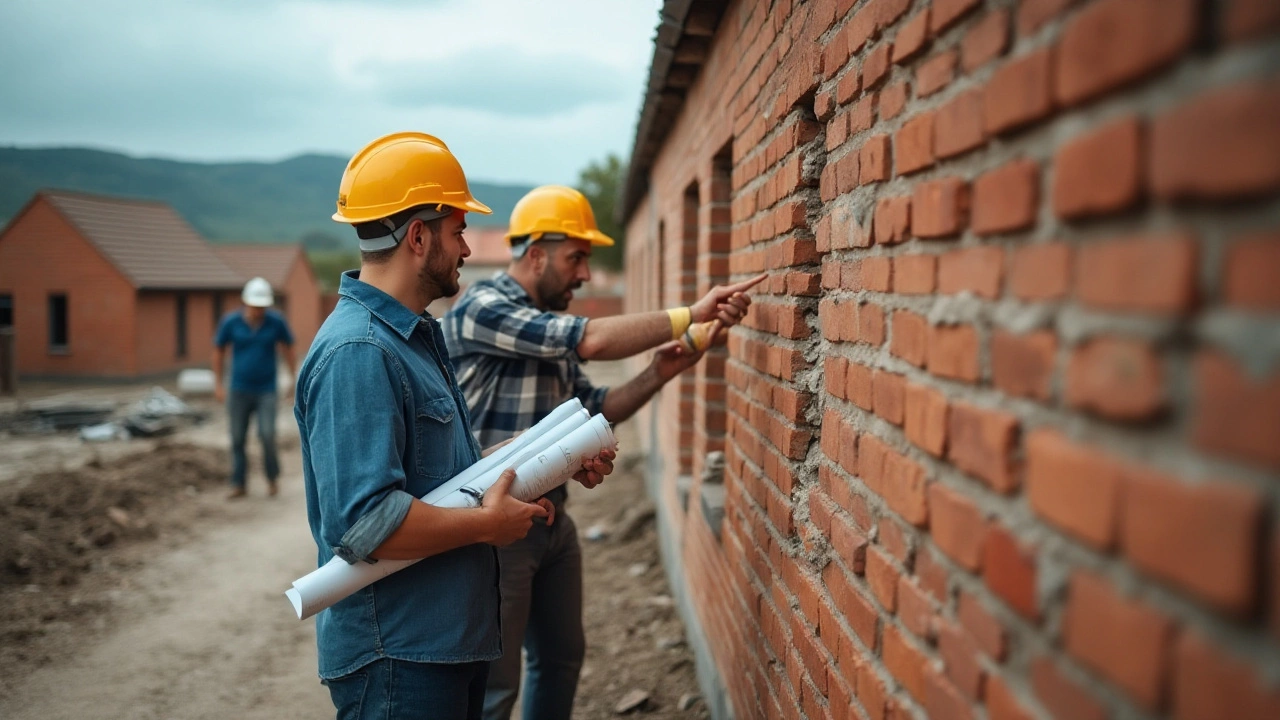
Identifying and Addressing Defects
When it comes to new builds, recognizing defects at an early stage can prevent potential headaches and save a significant amount of money in the long run. It’s more than just glancing over a new property; it involves a systematic process of thorough inspections, knowledgeable assessments, and the use of professional expertise. Defects come in many forms and can range from obvious visual blemishes like cracks in walls to subtle issues such as inadequate insulation. Some problems, such as water leaks, might remain unnoticed until substantial damage is done, which emphasizes the necessity of vigilance and expertise in gauging a new build's condition.
To effectively identify defects, homeowners should pay close attention to specific signs. Exterior inspections should look for uneven surfaces, poor quality paintwork, and any signs of foundation instability such as minor cracks, which may seem harmless at first but could evolve into significant structural concerns. Inside the house, checking for proper alignment of doors and windows, examining floorings for unevenness, and ensuring plumbing systems function smoothly are vital tasks. Understanding these subtle indicators can make a substantial difference in assessing the real value and longevity of a property. Engaging with a certified home inspector hugely assists in this identification process, as they possess the tools and knowledge to detect even the most elusive issues.
Approaching Defects Resolution
Once a defect is identified, addressing it promptly is crucial to maintaining the integrity and value of the property. Homeowners are often unaware of their rights regarding construction defects, but many builders offer warranties that cover these problems, especially if reported within a specified warranty period. This is where effective communication with the builder becomes essential. Documenting all identified issues with photographs and detailed descriptions creates a strong case when negotiating repairs under warranty terms. Consistent follow-up is key to ensuring that the contractor takes necessary action in a timely manner.
Addressing defects isn't simply about patching up problems; it's about understanding and resolving the root cause effectively. For example, if there’s recurring moisture in certain areas, it may not be enough to just fix the visible damage. The underlying issue might be improper sealing or drainage design which requires a more extensive fix. By involving professionals like structural engineers or specialized contractors, homeowners can ensure that defects are not just repaired, but resolved permanently. Incorporating a preventative mindset by using quality materials and ensuring proper construction practices during repair work can help prevent similar defects in the future.
According to the National Association of Home Builders, approximately 20% of new builds have reported defects within the first year alone, highlighting the commonality of this issue. The key is in taking swift, informed steps upon identifying defects, ensuring they are taken seriously, analyzed and addressed adequately to safeguard the investment's worth. As real estate expert Jonathan Peters once said,
“Quality homes aren’t just born out of blueprints and materials; they’re the result of meticulous attention to detail and a passion for enduring excellence.”This understanding emphasizes the significant role that identifying and addressing defects plays in achieving a truly high-quality home construction.
The Role of Inspections
Inspections play an instrumental role in determining the quality of new builds. This process, when done correctly, is designed to catch issues that might otherwise go unnoticed until it's much too late. While a house may look sound and inviting from the outside, a robust inspection will leave no stone unturned, digging deeper than the superficial finesse of brand-new aesthetics. Typically, inspections involve scrutinizing many elements, from the foundation up to the roof, ensuring every part of the home meets specific safety and quality benchmarks. Such meticulous assessment isn't just about finding faults but also about safeguarding the buyer’s investment from preventable post-purchase obstacles. What's pivotal here isn't merely the inspection itself but the expertise of the person conducting it, as knowledge and experience make all the difference in identifying subtle yet significant construction defects.
Moreover, inspections aren't confined to just post-construction. A phased inspection approach, where evaluations occur at various key construction phases, can be extremely beneficial. These stages may include, but are not limited to, foundation laying, framing completion, mechanical and electrical system installation, and finishing work. By incorporating checks at each of these fundamental stages, potential issues with the build can be caught early, saving both time and significant repair costs down the road. Home inspection experts unanimously agree that phased inspections can reduce the likelihood of major defects manifesting after the project's completion. The presence and protection of these measures against latent defects are crucial to maintaining quality throughout the building's construction.
Ron Tanner, a seasoned home inspector, once said, "A thorough inspection is like a health check-up for your home. It’s essential not only for peace of mind but for long-term advantages that go beyond mere budgeting." His words echo the necessity for dedicated and proficient inspection processes.
The popularity of independent inspections has surged, as more buyers and developers opt for additional certification beyond the standard checklists offered by builders themselves. While some argue that these are unnecessary expenses, others see them as a wise investment in ensuring quality and avoiding future litigation. It's also important to note the emergence of specialized inspections that target specific areas such as energy efficiency audits, which align with an increasing demand for sustainable home features. Ultimately, the role of inspections ensures all promises made by developers are delivered, offering a transparent and honest deal that reassures buyers of their decision.
Key Inspection Points to Consider
When arranging an inspection, it's critical to focus on several main areas often prone to defects. Plumbing and electrical systems are crucial; improper installations here could lead to long-term damage and costly repairs. The building’s structure itself, notably the load-bearing elements and overall stability, should always command attention to ensure compliance with structural safety standards. Inspectors should also verify the quality of materials used throughout the build, ensuring that what's promised isn't compromised for cost-saving measures. An efficient inspection will typically include:
- A detailed check of the roof and attic for leaks or poor workmanship.
- Evaluation of the foundation and basements for signs of cracks or water seepage.
- Assessment of windows and doors for proper fit and finish, checking for potential air leaks.
- Verification that the heating, ventilation, and air conditioning (HVAC) systems are functioning optimally.
In today's complex construction landscape, the effort and commitment toward thorough inspections cannot be understated. They represent a fundamental, preventive measure against the myriad of potential issues that new builds may unwittingly conceal. As the construction industry continues to evolve, the need for vigilant inspections will remain a constant force ensuring quality and safety are never compromised.
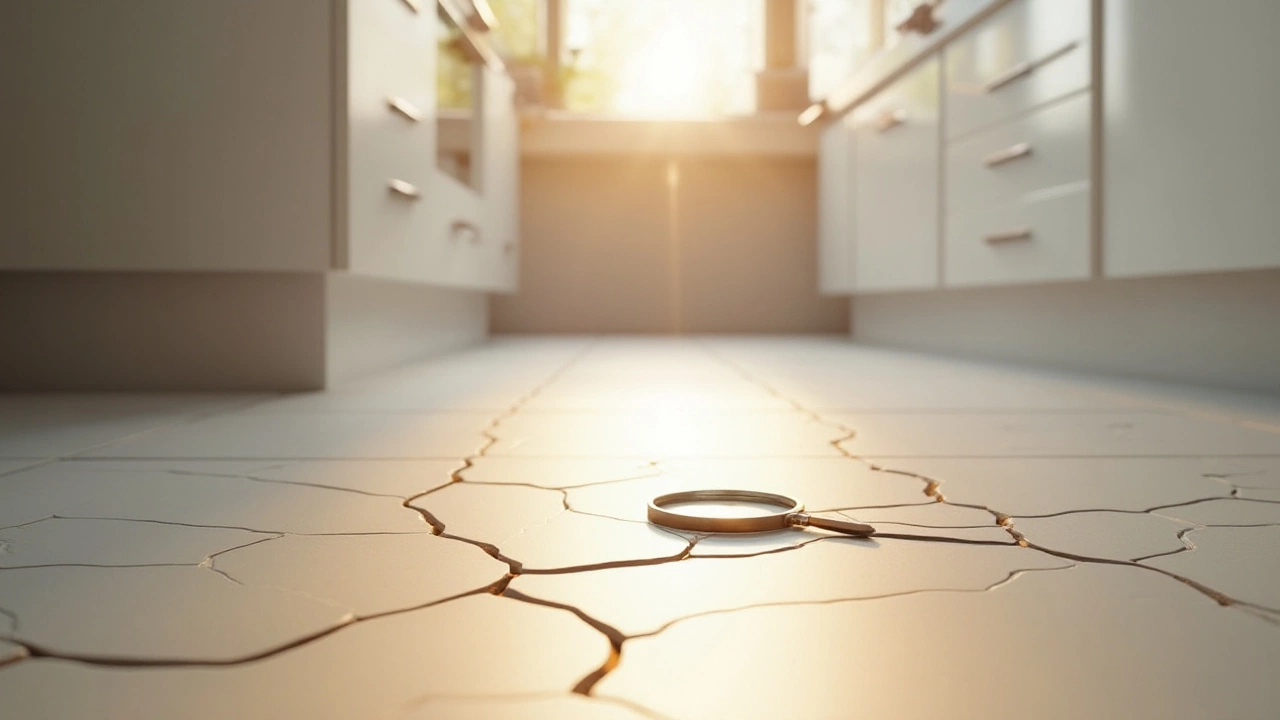
Preventative Measures
When it comes to new builds, taking proactive steps to prevent defects can often make a difference in ensuring the quality and durability of the construction. One of the first and most critical measures involves understanding and adhering to compliance standards and building codes from the very beginning. These regulations exist for a reason, ensuring safety, structural integrity, and comfort. An awareness of these guidelines helps developers spot potential risks before they become actual problems. Besides, applying quality control measures throughout the construction process is fundamental. This doesn't just mean double-checking your work, but systematically evaluating all processes and materials to ensure they're up to the task.
Another essential step in preventing defects is thorough site preparation and choosing the right materials. The site must be adequately assessed for geological conditions, slopes, and water drainage, securing a solid foundation. Selecting high-quality, durable materials doesn't just boost the build's longevity; it prevents the onset of issues that often appear over time due to weathering or use. Builders should also focus on hiring skilled labor. Workers experienced in handling specific materials and knowledgeable in modern building techniques can significantly reduce faults. Proper training and continuous education for the workforce in updated construction technologies can immensely improve outcome quality.
Communication and documentation are often overlooked yet absolutely vital preventative measures. Clear lines of communication must exist between all parties involved—builders, architects, engineers, and clients. Understanding the expectations, timelines, and budget constraints avoids unnecessary changes and errors. Moreover, meticulous documentation offers a clear project roadmap, indicating progress and any deviations that might need addressing. When every phase of construction is recorded, any issues that arise can be quickly and effectively resolved. Regular inspections conducted by both industry professionals and independent experts provide a safety net, ensuring that any irregularities are caught and addressed immediately. As the saying goes, prevention is better than cure, and it couldn't be truer when it comes to construction.
An effective preventative measure also involves implementing robust moisture control strategies. Water damage is a significant enemy in any construction, so including a well-planned drainage system, effective waterproofing methods, and high-quality sealing materials can prevent many common defects associated with water infiltration. Inspections for moisture control happen at multiple stages, from checking the groundwork to evaluating roofing installations. Regular monitoring throughout the construction process can ensure these strategies are functioning as intended. By maintaining diligent oversight, builders can significantly reduce the chances of structural weakening or mold growth due to moisture.
"An ounce of prevention is worth a pound of cure in construction, where early planning and thorough process management can save tremendous costs and time," Thomas Scott, a veteran home inspector, rightly notes.
Legal Considerations and Warranties
When it comes to new builds, understanding the legal considerations and warranties provided can be pivotal in ensuring peace of mind for new homeowners. These legal frameworks are not just formalities but serve as the backbone of safeguarding your investment from potential pitfalls. In many regions, new homes come with a series of protections mandated by local laws, which are aimed at addressing and covering construction defects that may arise over time.
Warranties typically cover various aspects of the construction, ranging from structural integrity to cosmetic finishes. Standard builder warranties usually operate in phases. For instance, cosmetic defects such as paint and fixtures might have a shorter warranty period—often around a year—while structural components like the roof and walls could be covered for up to ten years. Understanding these timelines and specifics is critical as it allows homeowners to prioritize inspections and address issues while coverage is available. A savvy homeowner will meticulously review these warranty documents to fully grasp the coverage extent. These warranties act as valuable safety nets; without them, the financial burden of repairs can prove substantial.
When something goes awry, knowing the necessary steps to make a warranty claim is essential. Filing a complaint generally begins with contacting the builder or warranty provider. This is usually followed by submitting a formal written request that describes every observed defect with supporting evidence like photos or inspection reports. Builders are typically legally bound to respond within a specified period, offering repairs or other forms of remediation. However, navigating this process can be arduous without understanding the legal nuances or without professional guidance.
Homeowners should also be aware of their legal rights under different regional laws. For example, in the United States, many states require builders to adhere to certain building codes and standards, which can influence a homeowner’s recourse in defect matters. Legal advice might be necessary if disputes arise regarding what constitutes a genuine defect or if the builder fails to fulfill their obligations, which sometimes leads to mediation or litigation. As highlighted by lawyer Alan Cumming, a veteran in construction law, "A builder's liability doesn't end with the closing signature; rightfully recognizing defects within the confines of the warranty's purview is a homeowner’s armor in the construction arena."
An interesting aspect of the legal landscape in new builds is the potential involvement of third-party inspections. Some warranties, especially those provided by reputable third-party companies, might require or even cover independent inspections before their conclusion. This not only encourages builders to deliver quality workmanship upfront but also provides an impartial perspective on any alleged defects. These inspections can be critical in disputing claims if a builder argues against a defect's existence.
Addressing legal considerations and warranties head-on is not just a matter for post-construction reflection. During the purchasing phase itself, thorough reviewal of builder contracts, warranty terms, and potential limitations is indispensable. Often, builders have pre-set terms that restrict their liability. Employing legal counsel at this stage can offer clarity and ensure that the deal you’re entering into aligns closely with your expectations and legal desires. This proactive approach can save endless frustration, bridge gaps in communication, and ultimately ensure a satisfactory resolution in any construction defect disputes. Understanding these dynamics empowers homeowners to make informed decisions and secure their new builds with confidence.
